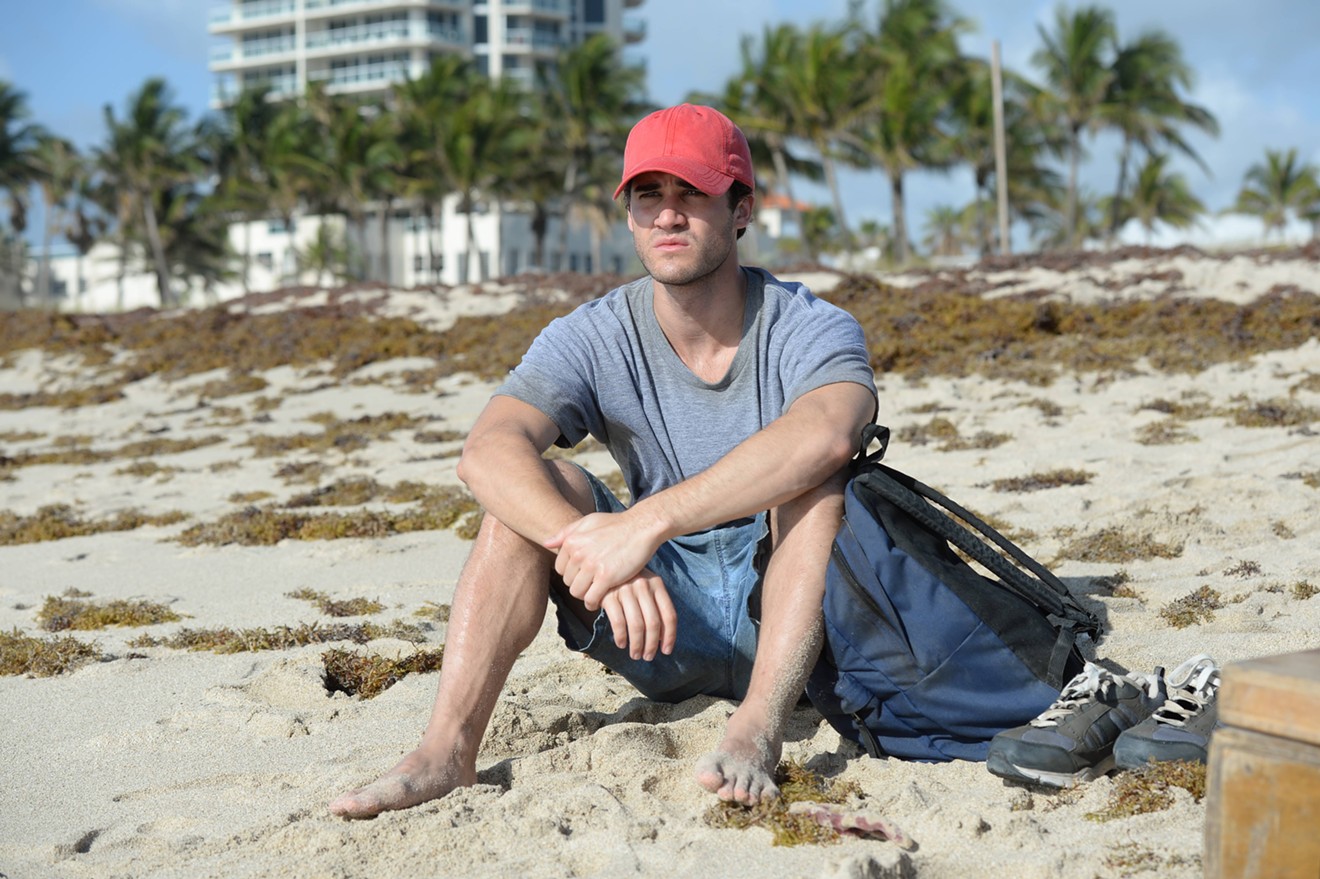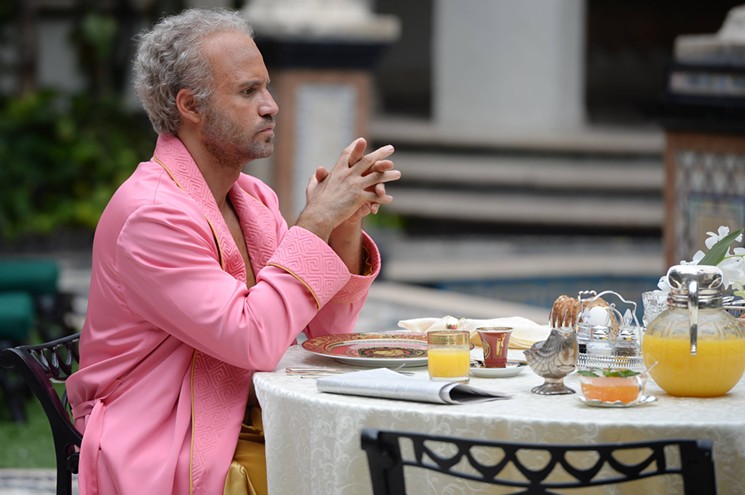To call Ryan Murphy’s American Crime Story: The Assassination of Gianni Versace the culmination of a career of experience isn’t exaggeration. In a lengthy, operatic, and dialogue-light opening, the director and writer Tom Rob Smith (London Spy) take viewers to Miami Beach in the summer of 1997. The morning sunlight bathes a city best known for its tourists and beaches just before tragedy strikes. For seven and a half minutes, Murphy walks us through the lives of two men before one murders the other and knocks us back into reality: This ain’t opera; it’s television. But damn if it isn't great television.
The premiere episode is exquisitely crafted television that paints a fascinating picture of a moment in the life of this city. The people onscreen may not represent the best of Miami, but they're Miami no less. A narcissist like Andrew Cunanan who will do anything to be the center of attention? Check. Gay men like Gianni Versace living in the lap of luxury on the Beach during its supposed peak? Check. Incompetent police officers who have absolutely no idea how to interact with gay men? Check.
It goes all the way down to the opportunistic individuals outside Versace’s mansion the morning of his murder. A young man sprints to take a snapshot of the dying fashion designer and then tries to sell the photo to the highest bidder; a couple who had asked for Versace's autograph shortly before he was gunned down promptly run over to sop up some of his blood using a magazine ad for his brand. As hundreds of people have joked, Miami is a city founded on grifters, of people pulling one scam after another to build themselves up. These are our tourists, our locals, our politicians. And if that isn't Andrew Cunanan, we don't know what is.
Murphy understands that Miami is as gaudy, gay, and greedy as the characters he's put onscreen. Yes, we certainly have more depth than that (as numerous films, from the Oscar-winning Moonlight to Borscht Corp's award-winning shorts, have shown). But the surface-level charm is prevalent, often hiding that depth from outsiders. In Versace, Murphy leans deeply into the façade.
Still, Versace, like Miami, seems to promise more than surface-level charms. It's not just the gorgeous visuals or Penélope Cruz playing Donatella Versace without attempting to hide her Spanish accent. It's not just Édgar Ramírez working on beautiful Versace costumes for an opera or having his shirt logo sliced open on a hospital table in the most heavy-handed death scene ever. And it’s not just Ricky Martin as Antonio D'Amico wailing for an ambulance while holding his dying lover as though they were Michelangelo’s Pietà. Versace writer Tom Rob Smith has used Maureen Orth’s book Vulgar Favors: Andrew Cunanan, Gianni Versace, and the Largest Failed Manhunt in U. S. History as a jumping-off point to create a portrait of this place that's as loving and as critical as it should be.
The beauty of the pilot episode is in the details, its slow but smart establishing of the period we’re entering. This is the queer '90s: There’s sex, nightlife, and drugs. There’s also an AIDS epidemic that people still had no real clue how to deal with. It's implied in scenes showing Cunanan pulling up his shorts to reveal a lesion and Versace taking medication. That unease buzzes beneath scenes in which a police officer can barely communicate with D’Amico during questioning because he can’t grasp the concept of two men dating, much less two men in an open relationship. It’s in the word "faggot" written on a public beach bathroom wall.
With the episode "The Man Who Would Be Vogue," American Crime Story delivers a promising premiere, one that announces an unashamed exploration of what it meant to be gay in the 1990s, even if it’s told partially through the lens of a sociopath who murdered at least five people during that period. We can only hope the rest of the series is as exciting as the first episode.
[
{
"name": "Air - MediumRectangle - Inline Content - Mobile Display Size",
"component": "19274298",
"insertPoint": "2",
"requiredCountToDisplay": "2"
},{
"name": "Editor Picks",
"component": "17482312",
"insertPoint": "4",
"requiredCountToDisplay": "1"
},{
"name": "Inline Links",
"component": "18711090",
"insertPoint": "8th",
"startingPoint": 8,
"requiredCountToDisplay": "7",
"maxInsertions": 25
},{
"name": "Air - MediumRectangle - Combo - Inline Content",
"component": "17482310",
"insertPoint": "8th",
"startingPoint": 8,
"requiredCountToDisplay": "7",
"maxInsertions": 25
},{
"name": "Inline Links",
"component": "18711090",
"insertPoint": "8th",
"startingPoint": 12,
"requiredCountToDisplay": "11",
"maxInsertions": 25
},{
"name": "Air - Leaderboard Tower - Combo - Inline Content",
"component": "17482313",
"insertPoint": "8th",
"startingPoint": 12,
"requiredCountToDisplay": "11",
"maxInsertions": 25
}
]













